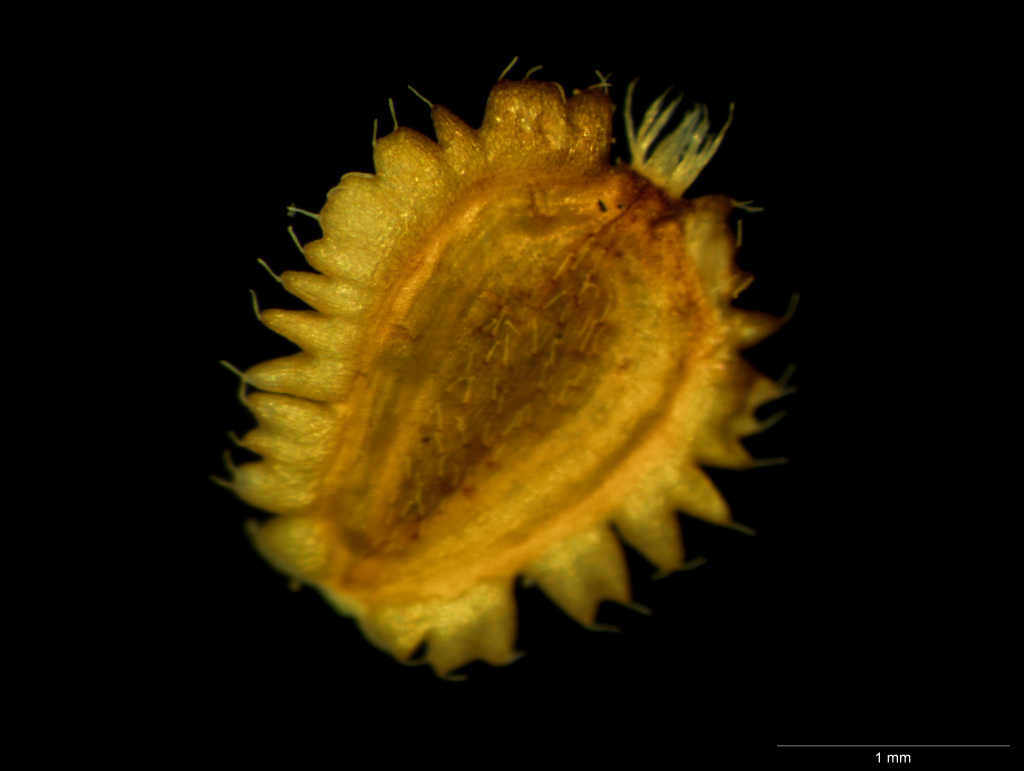Brachyscome chrysoglossa
F.Muell. Yellow-tongue DaisyErect perennial herb, 15–40 cm high, mostly glabrous or with scattered, eglandular hairs, at least the upper part of the peduncle with glandular hairs. Leaves basal and cauline, narrowly obovate or narrowly elliptic, 1–11 cm long, 2–18 mm wide, glabrous or with eglandular and glandular hairs, entire or 3–5(–10)-lobed toward apex, sometimes with 1 or 2 small lobes toward base. Bracts 13–24, c. 1-seriate, c. equal, mainly obovate or elliptic, 2.5–6 mm long, 0.7–3 mm wide, green with scarious, often purplish margins, glabrous or with scattered hairs, margins of at least some bracts with cottony hairs; ligules 5–9 mm long, yellow. Cypselas widely obovate or obovate, 2.5–2.9 mm long, 1.6–2.1 mm wide, light brown; lateral faces more or less smooth, with short, barely curled, eglandular hairs and often some glandular hairs; wing-like margins inflated, entire or variously dissected, hairy; pappus 0.1–0.3 mm long, bristles joined at the base. Flowers Jun., Sep.–Jan.
MuM, Wim, VRiv, MuF, Gold. Also NSW, Qld. In Victoria occurring as far west as Jeparit and Horsham, extending eastward to Strathmerton and Ulupna Island. Commonly on clay soils subject to inundation.
In Victoria the name Brachyscome curvicarpa G.L.R. Davis has commonly been misapplied to specimens referable to this species. Brachyscome curvicarpa is only found in New South Wales and Queensland.
Short, P.S. (1999). Brachyscome. In: Walsh, N.G.; Entwisle, T.J., Flora of Victoria Vol. 4, Cornaceae to Asteraceae, pp. 835–859. Inkata Press, Melbourne.
 Spinning
Spinning
